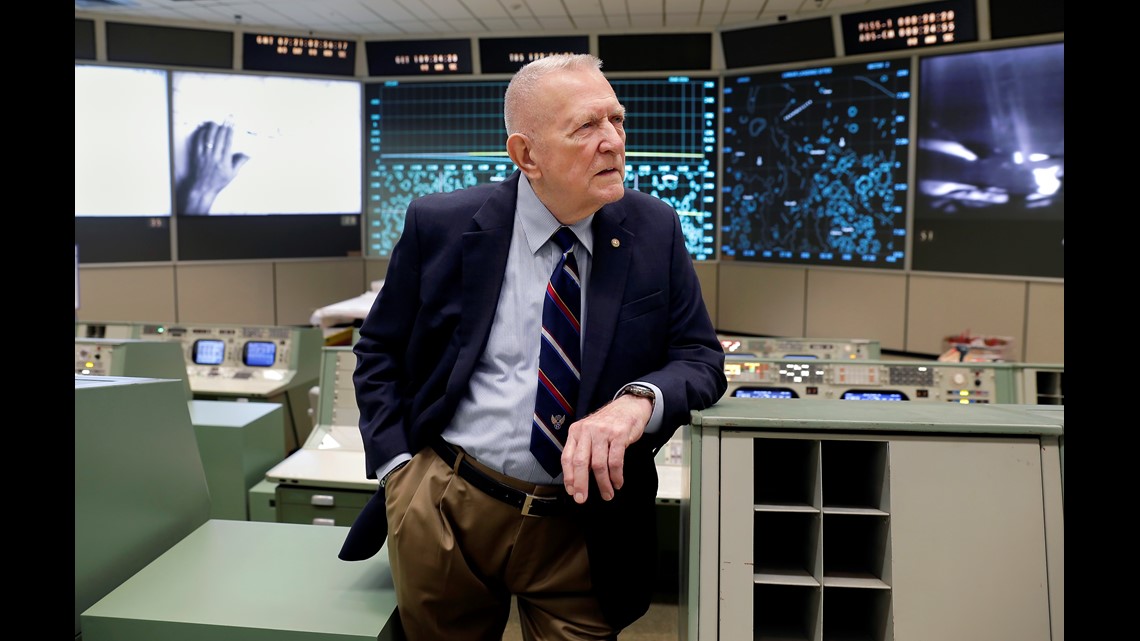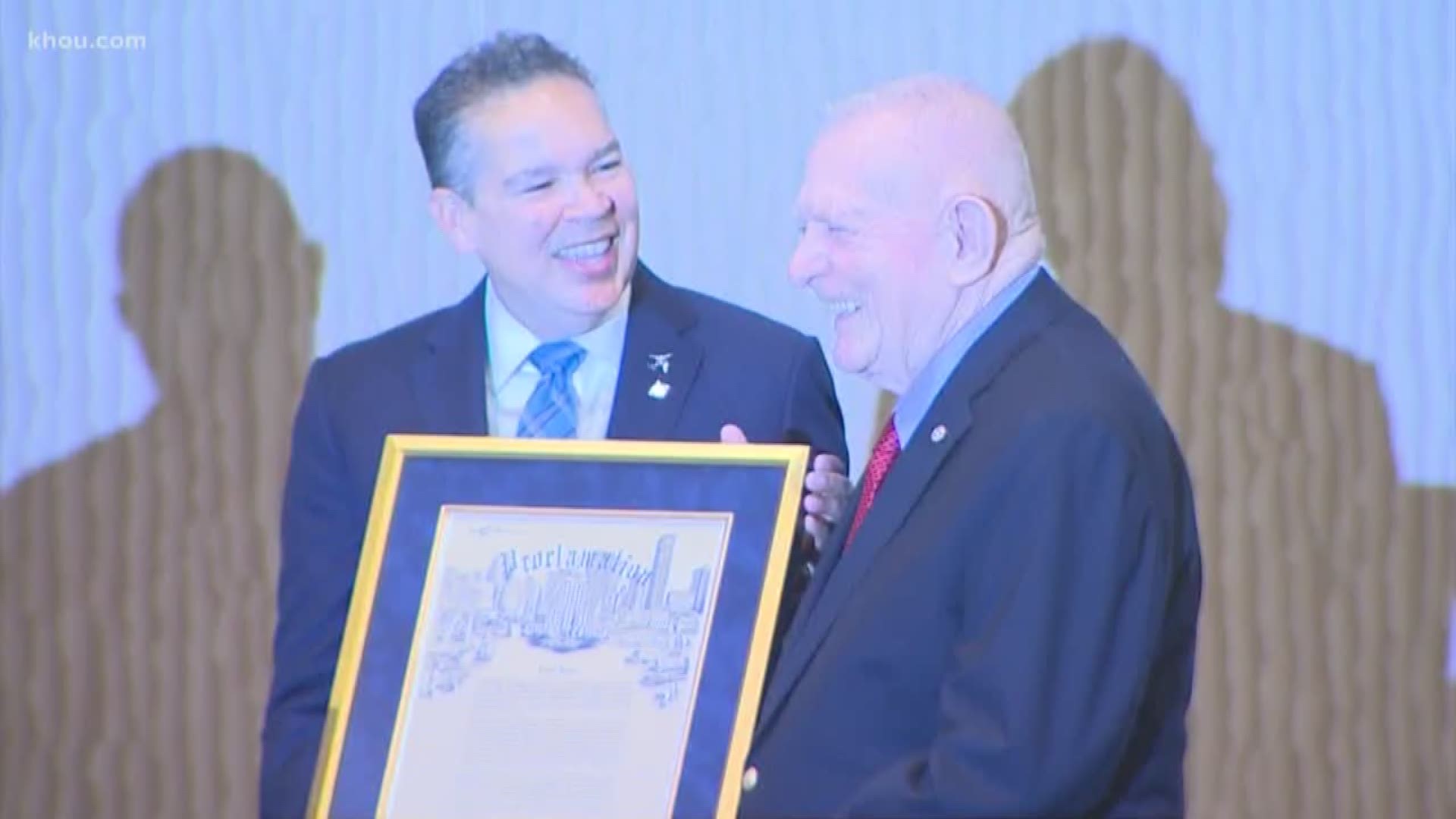TOLEDO, Ohio — "For Americans, nothing is impossible. Exactly 50 years ago this month, the world watched in awe as Apollo 11 astronauts launched into space with a wake of fire and nerves of steel, and planted our great American flag on the face of the moon. Half a century later, we are thrilled to have here tonight the famed NASA Flight Director, who led Mission Control during that historic endeavor, the renowned Gene Krantz. Gene, I want you to know that we’re going to be back in the moon very soon and someday soon, we will plant the American flag on Mars."
President Donald Trump directed these comments on July 4 to Gene Kranz, the NASA flight director who helmed Mission Control on July 14, 1969. On that day 50 years ago, Kranz was responsible for overseeing the Eagle's historic landing and the subsequent "one small step for a man and one giant leap for mankind."
To understand what some may say was the genesis of that dream, we need to leap back to Depression-era Toledo, where one Eugene Francis Kranz was born.
Kranz was born on Aug. 17, 1933, in Toledo, and he attended Central Catholic High School, graduating in 1951. He credits his teachers for giving him the education, enthusiasm and skills necessary to be successful at his job with NASA.
Central Catholic was the recipient of Kranz's NASA-bestowed Ambassador of Exploration Award, which he gave to the school in 2007. The award has a piece of the moon encased in lucite.
Kranz's affinity for space was reflected in his high school thesis, "The Design and Possibilities of the Interplanetary Rocket."
“I always wanted to fly,” Kranz later wrote in his memoir, "Failure Is Not an Option." “I had my head in the clouds and my heart followed.”
Though his trajectory was meteoric, Kranz's beginnings were decidely earth-bound, having grown up on a farm that overlooked the Willys-Overland Jeep plant.
After graduating from Central Catholic, Kranz went to Saint Louis University, where he received a bachelor of science degree in aeronautical engineering from the Parks College of Engineering, Aviation, and Technology in 1954. He also received his second lieutenant commission in the U.S. Air Force Reserve in 1955, having completed his pilot training at Lackland Air Force Base.
He flew an F-86 Sabre aircraft in patrol operations around the demilitarized zone during the Korean War. Following his Korea tour, Kranz started in research and testing with McDonnell Aircraft Corporation, and then joined the NASA Space Task Group in 1960.
Kranz married Marta Cardena, and the couple had six children. Marta sewed, and made for Gene what became known as his signature waistcoats. Starting with the Gemini 4 mission, he wore a new vest for each mission. The Smithsonian has the vest he wore during the tense return of Apollo 13.
During his NASA career, he was promoted to flight director level and served as such for Gemini and odd-numbered Apollo missions.


The Apollo 11 and Apollo 13 missions are the ones for which Kranz is most remembered, seated at the Mission Control console in Houston. Ahead of the 50th anniversary of man's landing on the moon, Mission Control has been restored to the way it looked on July 14, 1969.
"When I sit down here and I'm in the chair at the console ... I hear these words, 'Houston, Tranquility Base here. The Eagle has landed,'" Kranz told the Associated Press during a sneak preview at NASA's Johnson Space Center.
"The Kranz Dictum" is a much-circulated NASA phrase that came into the lexicon after Apollo 1, when Kranz addressed his flight control team following the disaster that killed Gus Grissom, Ed White, and Roger Chaffee.
"From this day forward, Flight Control will be known by two words: 'Tough' and 'Competent.' Tough means we are forever accountable for what we do or what we fail to do. We will never again compromise our responsibilities. Every time we walk into Mission Control we will know what we stand for. Competent means we will never take anything for granted. We will never be found short in our knowledge and in our skills," Kranz said.
"Mission Control will be perfect. When you leave this meeting today you will go to your office and the first thing you will do there is to write "Tough and Competent" on your blackboards. It will never be erased. Each day when you enter the room these words will remind you of the price paid by Grissom, White, and Chaffee. These words are the price of admission to the ranks of Mission Control."
Fifty years after the first person landed on the moon, we remember that the man behind the mission, tough and competent Gene Kranz, got his start right here in Toledo.

